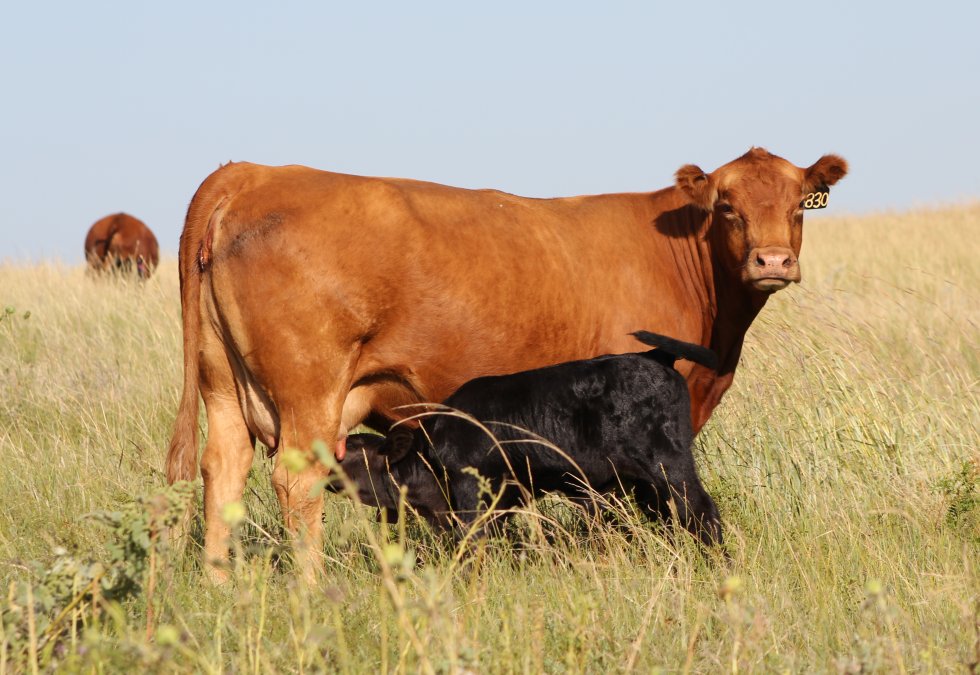
By Aaron Berger, Nebraska Extension Educator, updated with 2017 rates by Bethany Johnston, Nebraska Extension Educator
Pasture rental rates in Nebraska continue to be at a premium compared to the rest of the country. It will be interesting to see how long these prices last under current cattle market conditions and with harvested feed and distillers grains prices where they are currently.
Central Nebraska rental rates continue to be higher in the Sandhills area, compared to lower rental rates in other parts of Nebraska. The University of Nebraska-Lincoln conducts yearly surveys of cash rental rates across Nebraska. The preliminary report for 2017 pasture rental rates can be viewed at http://agecon.unl.edu/cornhusker-economics/2017/2017-trends-nebraska-farmland-markets .
For purposes of this example the following assumption is used.
A cow-calf pair (1200 lbs. cow and 300 lbs. calf) grazing in the summer eats on average 1.5 Animal Unit Month equivalents per month which is equal to approximately 1170 lbs. of air dried forage. (One Animal Unit Month is an estimate of how much 1,000 pounds of bovine would eat in a month, and this estimated consumption is 780 lbs. of air dried forage per month. 1.5 AUM x 780 lbs= 1170 lbs of air dried forage per pair.)
The following is an example of valuing the grazed air dried forage going into the cow on a per ton basis. The grazed tons of forage can be compared directly to what it would cost to buy hay. In this calculation, no waste is accounted for when moving, storing, or feeding the hay.
SUMMER GRAZING PRICE ; EQUIVALENT PRICE PER TON FOR HAY
$30/pair/month ; $51/ton
$40/pair/month ; $68/ton
$50/pair/month ; $85/ton
$60/pair/month ; $103/ton
$70/pair/month ; $120/ton
Currently hay can be bought in Nebraska for a cost per ton equivalent that in many cases is equal to or less than the cost per ton for grazed forage rates paid for cow-calf pairs. The quality of grazed grass early in the grazing season will likely be equal to or better than hay. In the later summer and fall the quality of the hay, based on energy and protein, may be better than grazed forage.
If you do decide to feed hay versus grazing pastures, most hays will not fulfill a complete ration for a milking cow with a calf. The other feed resource that would balance a roughage diet and is readily available in Nebraska is ethanol coproducts. Currently, dried distillers grains can be purchased at approximately $100 ton at the plant.
On a dry matter basis, a pound of distillers grains will have twice the energy and twice the protein of many hay sources. That means that a pound of distillers grains has the same energy and protein as two pounds of an average quality hay. Using a combination of hay and distillers could be an economic and feasible option, as well as a balanced ration, for many operations
With hay and distillers grains, there is the additional cost of labor and equipment and the waste loss that occurs in the storage and feeding process that needs to be taken into account. However, when hay or distillers grains is purchased and fed, nutrients are being brought in that have value when they are captured and utilized effectively.
Summer pasture rental rates in Nebraska have seen sharp increases over the last several years with wide ranges being paid per cow-calf pair per month depending upon a variety of factors. Current market prices for harvested feed are competitive in many cases with pasture rental rates when compared on a price per ton basis. The quality and value of the forage being consumed either by grazing or as hay needs to be taken into account as producers consider grazing and feeding options for the cow herd this summer and fall.
To listen to BeefWatch podcasts go to: https://itunes.apple.com/us/podcast/unl-beefwatch/id964198047 or paste http://feeds.feedburner.com/unlbeefwatch into your podcast app.